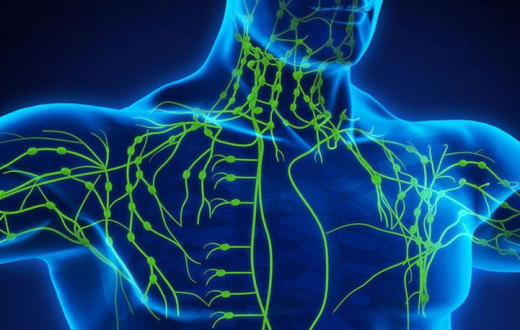By Sejal Shah┃Posted: May 03, 2019
Menopause is a powerful transition in a woman’s life. More and more women are seeking natural means to support them while they go through this physical, emotional, and spiritual transformation.
Unlike the West, Eastern traditions view menopause as a time of greater wisdom and deeper contemplation—a natural life transition to be celebrated and embraced gracefully. Because of the hormonal fluctuations during menopause, women can feel out of balance and victims of their changing bodies. Yoga and Ayurveda can be wonderful systems to help create the right balance and manage the symptoms of menopause to help smooth this significant transition.
Spiritual changes during menopause
Menopause is welcoming and celebrating the beginning of a radiant period of wisdom and grace in a woman’s life. If you can enter it with proper perspective and preparation, this can be an exciting transition.
Ancient yoga scriptures tell us that we live our life in four distinct phases. Our first phase of childhood signifies a period full of physical and mental growth and development; the second phase of adulthood as a period of outward progress and achievement. This particular third phase marks a period of letting go of the need to do and achieve, with more focus on inner growth, deep reflection, and contemplation on the life lived so far, preparing you for the final and fourth phase of deep fulfillment and peace that reminds who you ultimately are, a pure light.
Until we reach the third phase, we’ve probably barely had enough free time to even breathe deeply. But, now that our major responsibilities are taken care of, we can shift our attention inward, giving ourselves opportunity and space to experience what our true essence beyond the body and mind is. This brings in the graceful ability to pursue the ultimate purpose of your life and shower the world with compassion and wisdom. These phases are not rigid compartments, and there are often overlaps or exceptions.
Physical and emotional changes during menopause
Menopause marks the end of the female reproductive cycle with a drop in estrogen and progesterone, the main female reproductive hormones that decline considerably in a relatively short period of time. It is a gradual process, and does not occur overnight. This natural biological transition generally begins between ages 45 and 55, and can cause uncomfortable symptoms like irregular periods, decreased fertility, vaginal dryness, hot flashes, sleep disturbances, increased abdominal fat, thinning hair, loss of breast fullness, mood swings, irritability, and poor focus and memory. A healthy lifestyle consisting of a good diet and exercise regimen, along with the proper perspective and preparation, can help ease and prevent such conditions.
What is menopause belly fat, and what are its risks?
Among all the other changes that a woman undergoes during this time, the menopausal belly can cause severe long term consequences. As you approach menopause age, you may notice that you start gaining weight in your waist that is harder to lose than it once was. Even research shows that postmenopausal women have an increase in intra-abdominal fat—the deeper visceral body fat.
As estrogen levels fluctuate and drop, body fat is redistributed from the hips, thighs, and buttocks to the belly. Fat also becomes harder to burn. As progesterone levels decrease, cortisol levels increase, which can also cause the body to hold onto stubborn fat in the belly region (affectionately called the “menopot”) in your 40s and 50s, and it can be extremely frustrating to try and work it off. As a result, most women gain between five to ten pounds during the first decade after menopause.
This belly fat comes with an increased risk for mortality even with a normal BMI, and with an increased risk for heart disease, breast cancer, uterine cancer, diabetes, hypertension, stroke, sleep apnea, and many other serious and life-threatening diseases. Therefore, this shift in body fat storage is way more than just a cosmetic issue.
Determine if you are you at risk with this simple test
According to the National Institutes of Health, a waistline of larger than 35 inches for women signals a significant increase in heart disease and diabetes.
Another quick way to gauge your risk level is by your waist-to-hip ratio. Measure around the fullest part of your buttocks and around the narrowest part of your waist. Divide your waist measurement by your hip measurement. A healthy ratio is less than 0.8; the ideal is 0.74. A ratio greater than 0.85 is associated with the health risks listed above.
Ways to beat the “menopause belly” with diet and exercise
In order to prevent and lose belly fat accumulating during menopause, you have to take many factors into consideration including your diet, your daily exercise, your sleep, and work-life balance. Cathy Garrard, the Research Director of Redbook and Woman’s Day magazines and a journalist who specializes in women's health and lifestyle issues, very systematically explains these 10 ways to beat menopausal belly fat.
How yoga can help a woman during menopause
Yoga’s ability to reduce stress, promote a healthy lifestyle, create a positive attitude and regulate and balance the endocrine and hormonal systems make it an excellent therapy to soften the transition into menopause. Besides the drop in the estrogen levels, a study done to access stress-induced cortisol response and fat distribution in women showed that stress is another factor that leads to elevated cortisol levels, which are associated with increased abdominal fat. Luckily, several studies have found that yoga can reduce stress and relieve symptoms of insomnia, hot flushes, weight gain, etc and improve quality of life in women going through menopause. Even National Institute of Aging recommends trying out yoga for managing hot flashes before trying out any medications.
In general, a slow-paced, breath-coordinated yoga practice like Sri Sri Yoga that emphasizes gentle poses, breathing practices, and meditation is recommended.
Low back bending poses such as Setu Bandhasana (Bridge), Bhujangasana (Cobra) and Dhanurasana (Bow) tone the kidneys, nourish the adrenal glands, and alleviate fatigue and tension.
Side bends such as Ardha Matsyendrasana (Seated Half Spinal Twist), Natarajasana (Supine Dancing Shiva) and poses that stretch the insides of the legs like Chakki Chalanasana (Churning Mill Pose), Janu Sirsasana (One Legged Seated Forward Bend) regulate digestion, belly fat and the liver’s soothing and stabilizing influence on the emotions. Read more: From Fat Pants to Yoga Pants: 5 Tips On Healthy Weight Loss
Chest opening poses such as Matsyasana (Fish), Kapotasana (Pigeon) and forward bends like Shishuasana (Child Pose), Yoga Mudra calm the mind and reduce anxiety.
Inversions like Sarvangasana (Shoulderstand), Viparitkarniasana (Legs Up on the Wall) nurture the cooling yin aspect of the body and regulate the endocrine system.
6-12 rounds of Surya Namaskara (Sun Salutations) with a mixed pace of fast and slow can help with managing belly fat once the menopause starts. But during perimenopause, specially if you have excessive bleeding, it is not recommended to do too many rounds.
Gentle and soothing Nadi Shodhan pranayama (Alternate Nostril Breathing) for up to 5 minutes three times a day daily will decrease your level of stress and calm your nervous system.
Shitali, Sitkari and Chandrabhedan pranayama can be used to reduce hot flashes and burning tip of the tongue (experienced by many women) by clearing heat from the body.
Once hot flashes have subsided, heating pranayama like Surya Bhedana Pranayama, as well as Surya or Agni Mudra, popularly known as Mudra of Metabolism, can help boost up your aging-related slowed metabolism and thus reduce belly fat.
A powerful breathing practice—Sudarshan Kriya—known for reducing stress and improving quality of sleep and overall wellness, can be a wonderful inclusion in your daily yoga practice. You can learn it at Happiness Program offered at an Art of Living Center near you.
Finally, finish with Sahaj Samadhi meditation, or any guided meditation like Pancha Kosha meditation, followed by a short Yoga Nidra or Savasana to conclude your practice and meet your rest of the day with peace of mind.
How Ayurveda can help a woman during menopause
In the Ayurvedic view of the human body, each of us is born with a fundamental constitution, or prakriti, that remains with us throughout life. Acting upon the constitution are three bioenergy influences, or doshas: Vata, Pitta, and Kapha. Doshas can be thought of as modes of intelligence within nature that determine our constitution, personality, appearance, and health. Each dosha regulates several functions: vata represents the elements of air and ether and controls all forms of movement in our bodies, including blood circulation, digestion, breathing, and the nervous system; pitta represents fire and water and governs metabolism; kapha represents earth and water, governing such structures as tissues and bones. Though one dosha will always preside within the constitution, a state of health is characterized by dynamic balance between all three within the system.
According to International Journal of Scientific Research and Education, during menopause; women might suffer from various signs and symptoms which can be categorised according to doshas as -
Vata dominated menopause
During a vata-dominated menopause, women are likely to experience any or all of the following symptoms:
1. Nervousness
2. Anxiety, worry, fear
3. Insomnia
4. Mild hot flashes
5. Depression
6. Poor skin tone
7. Constipation or irritable bowel
8. Vaginal dryness, loss of libido
9. Mood swings
10. Osteoporosis
Pitta dominated menopause
Women whose menopause is dominated by pitta may generally experience any or all of the following symptoms:
1. Angry outbursts
2. Irritability, criticism, jealousy
3. Short temper
4. Hot flashes and night sweats
5. Urinary tract infections
6. Skin rashes
7. Hypertension
Kapha dominated menopause
In this case symptoms may include:
1. Weight gain
2. Sleepiness
3. Sluggishness
4. Yeast infections
5. Slow digestion
6. Fluid retention - oedema
7. Decreased concentration due to dullness
8. Dyslipidemia
According to Ayurveda, there is no one way that any disease will manifest. The interplay of all doshas add uniqueness and diversity. Use the above guidelines to understand what unique flavor your menopause has or can have and what doshas may be out of balance. It is recommended that you get your dosha checked through nadi pariksha (pulse assessment) by an ayurvedic expert, or alternatively you can take this dosha quiz. Your consultant can then recommend a diet and lifestyle in line with your dosha imbalance.
Here are some general Ayurvedic recommendations for the main concerns of menopause:
1. Ashwagandha and Shatavari - Commonly known as women’s health tonic, these two supplements can help boost vigor and vitality in women. They can be used to treat menopausal complaints, including vaginal discharge, night sweats, sleep disturbances, anxiety, hot flashes and mood swings. They can be consumed with milk.
2. Fenugreek Seeds - These wonder seeds are packed with a lot of healthy properties. Fenugreek has natural hormonal balancing properties that can keep bloating and hot flashes at bay. Soak ½ teaspoon of fenugreek seeds (methi dana) in water overnight and consume it early in the morning on an empty stomach.
3. Drink hot, boiled milk with a pinch of nutmeg or Turmeric at bedtime if you have sleep disturbances. Try to go to sleep at a set time and wake at a set time. Get sufficient sleep: the average adult needs 7–8 hours! Avoid naps during the daytime. Go to sleep with your T.V., cell phone, and all other electronic gadgets off.
4. Ghee - Ayurveda’s natural lubricants, ghee and sesame oil, can be very helpful for vaginal and overall dryness. Increase your intake of ghee by adding it into your food preparations. Organic ghee from grass fed cow’s milk is preferred.
5. Take 2 Triphala tablets at bedtime, drink plenty of water, and eat high fiber vegetables and fruits to maintain good digestive health.
6. Take sesame seeds and dairy, eat high fiber vegetables that are also a good source of calcium, such as leafy green vegetables, in balance with proteins to ensure good bone health. Get enough dose of Vitamin D from the sun either around sunrise or sunset time in the evening.
7. Tea made from fennel seeds, coriander seeds, and cumin seeds can also help with hot flashes and digestion.
8. Go for a Panchkarma cleanse twice in a year at an authentic Ayurveda spa such as Shankara Ayurveda Spa in Boone, NC.
Prevention is better than a cure
“Heyam Dukham Anagatam” - Stop any potential suffering before it arises.
This is the purpose of yoga. The most successful approach to achieving a smooth transition is to start now—no matter what age you are. Honor your womanhood and give yourself time and space for self-care no matter how busy you are. Prioritize your self-care when you are young to prevent suffering in later years.
We hope you find these holistic tools helpful and supportive in your journey, and that you have a healthy, graceful transition that you enjoy to its fullest!
This content is not intended to be a substitute for professional medical advice, diagnosis or treatment. Always seek the advice of your physician or other qualified health providers with any questions you may have regarding a medical condition.
Sejal Shah, E-YRT 500 Sri Sri Yoga Teacher, YACEP, Art of Living Teacher, NYU Post Graduate Medical School approved Yoga-CME retreat facilitator, Mind-Body Wellness Writer, Homeopath





























